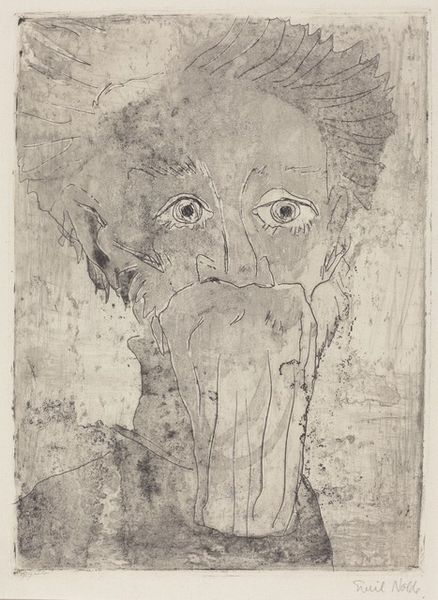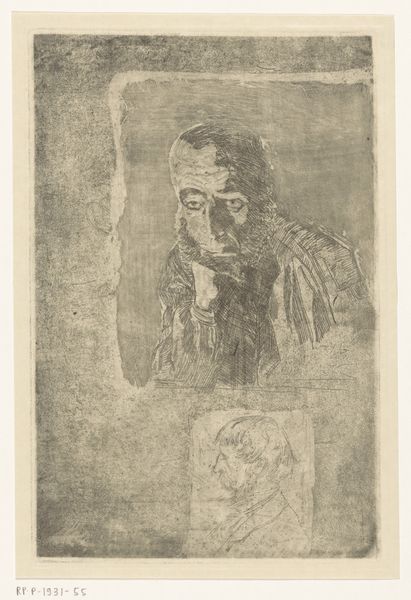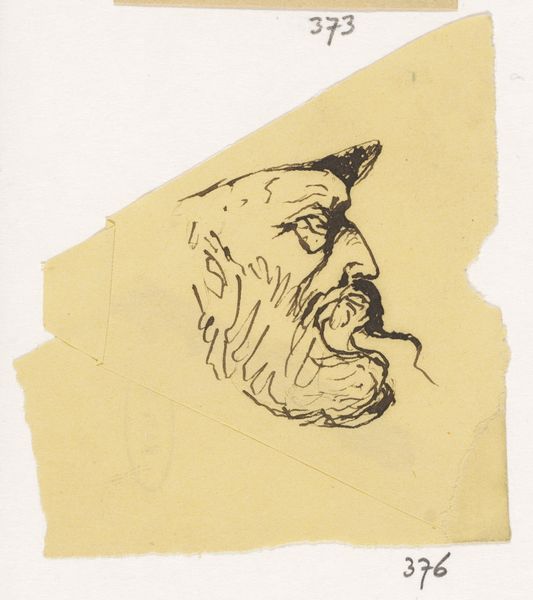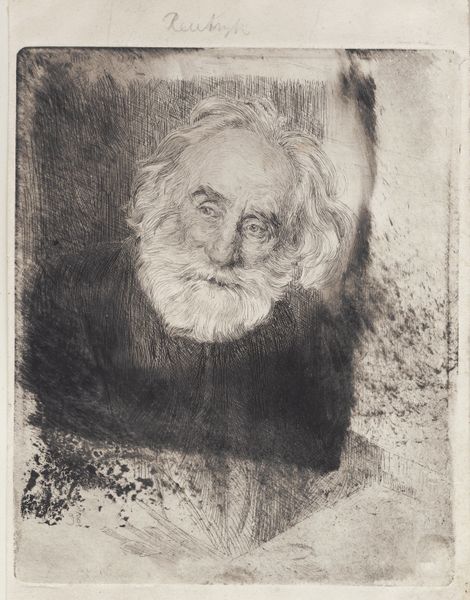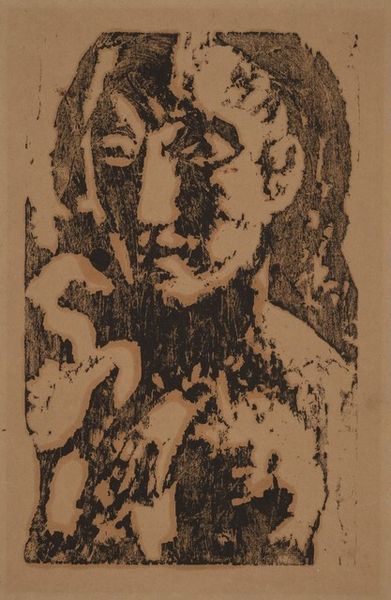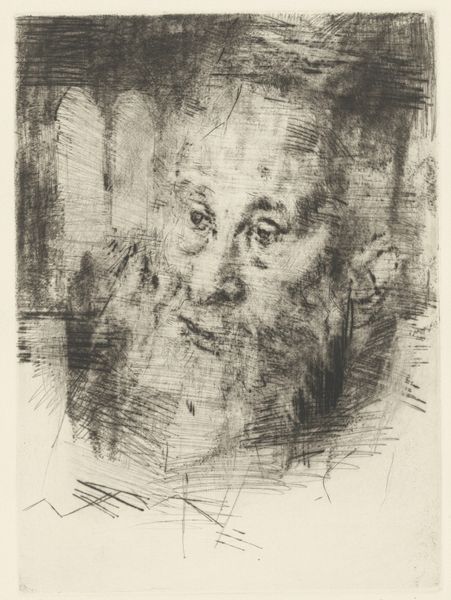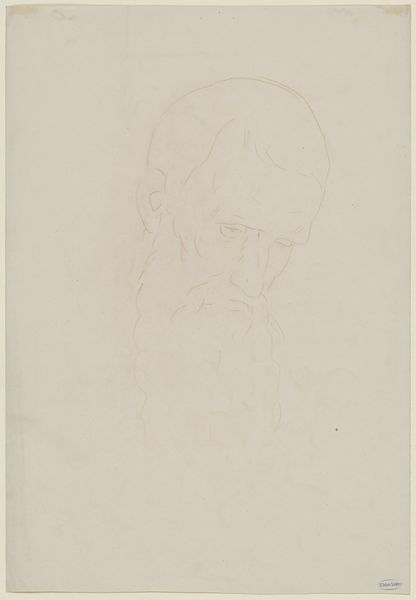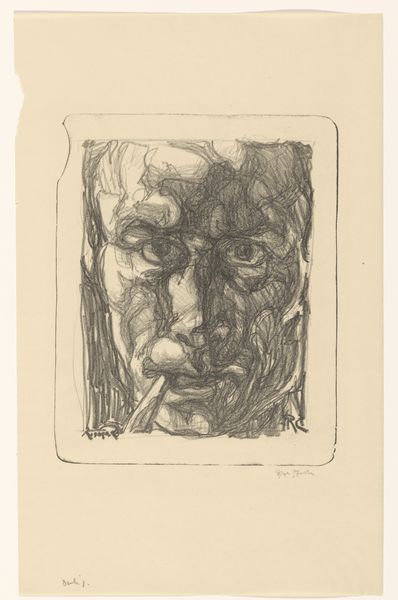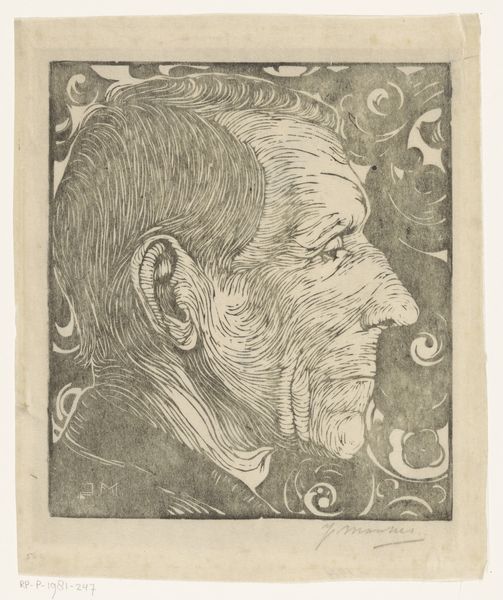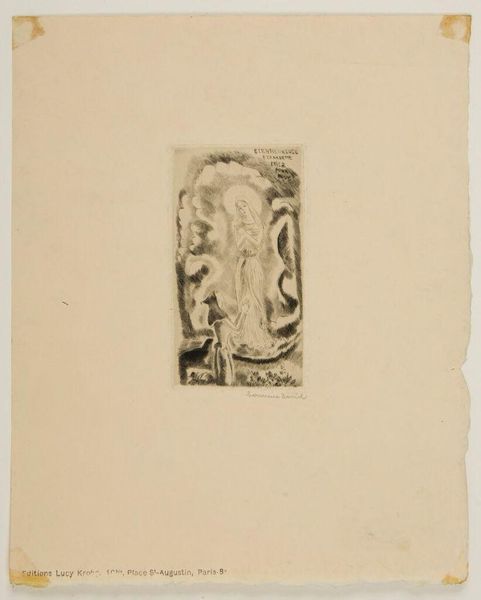
drawing, ink
#
portrait
#
drawing
#
german-expressionism
#
ink
#
expressionism
#
line
Dimensions: 30.9 x 25.1 cm
Copyright: Public domain
Curator: Before us, we have Ernst Ludwig Kirchner's "Head Bosshart," created in 1921. It's an ink drawing that exemplifies the Expressionist style. Editor: It’s a strikingly raw portrait. The lines are so frantic, almost aggressively scribbled, creating a real sense of unease and agitation. Curator: That raw quality is typical of Expressionism, where the goal was to convey subjective emotion rather than objective reality. Kirchner was deeply affected by his experiences in World War I, which significantly shaped his art and its reflection of the trauma suffered in Germany during the 1920s. Editor: Absolutely, the hatching and cross-hatching contribute to the textural depth, yet paradoxically flatten the figure. There is no serene outline to fix it to a particular form, it becomes floating. The overall effect leaves you in a state of suspended animation, even anxiety, looking into those eyes that don't have pupils and yet stare at you intently. Curator: Yes, portraits like this served as critiques of the dehumanizing effects of war and industrial society. They challenged the established social order and moral compass and helped his post-war audiences make sense of the shifting values and disillusionment that defined this historical moment. Editor: What strikes me most is the asymmetry. One eye is subtly larger, the lines on one side of his face are heavier, almost collapsing the man onto one side of himself. It disrupts any sense of equilibrium, hinting at a profound internal conflict. Curator: Expressionists employed these strategies of distortion intentionally to expose the psychological undercurrents that lie beneath the surface. His art, in part, aimed to elicit a critical response that exposed hidden aspects of modern social and political life. Editor: It certainly does. It’s a disturbing, yet powerful, piece. Curator: Ultimately, this drawing invites us to look beyond the surface, consider its tumultuous socio-political era, and recognize the shared human experiences that resonate across history. Editor: Precisely. It serves as a stark visual representation of existential and emotional distress. The power is that these intrinsic aspects are communicated so elegantly with just line work.
Comments
No comments
Be the first to comment and join the conversation on the ultimate creative platform.
